December 02, 2014
By Darren Warner
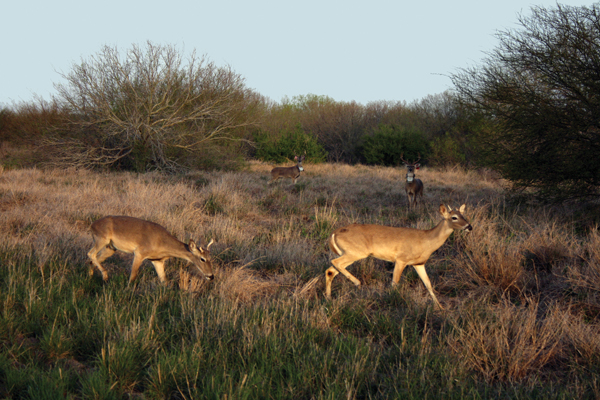 It's black as night, and I'm falling behind. I'm late getting to my stand, and a defective headlamp makes me collide with a neighbor's wood chipper. It's a week into the whitetail rut, and as I bite my glove to stifle a blood-curdling cry of pain, the baseball-sized bruise I just earned only adds to the depths of disappointment.
It's black as night, and I'm falling behind. I'm late getting to my stand, and a defective headlamp makes me collide with a neighbor's wood chipper. It's a week into the whitetail rut, and as I bite my glove to stifle a blood-curdling cry of pain, the baseball-sized bruise I just earned only adds to the depths of disappointment.
Throughout the summer and early fall, I'd used half a dozen trail cameras to pattern an impressive 9-pointer. But suddenly the deer is nowhere to be found. After hunting the same spot for three straight days, I figured the buck had probably left my property looking for estrus does.
Last night, a torrential downpour flooded the path to my favorite stand. So rather than plod through the mess, I opted for a different stand. At the end of the morning hunt, I stopped by my favorite stand to pull the memory card from a nearby camera. An hour later, near-horror struck me: several photos showed the buck I'd coveted standing about 20 yards from my stand.
I'd given up on my best hunting spot and it cost me. A lot of hunters would have made the same mistake. Many assume that once the rut kicks in, a buck can be found anywhere. Hunters also think that mature rutting bucks travel much more than their younger brethren in search of mates. But the latest research on deer movement is calling into question these long-standing beliefs.
Advertisement
Let's look at what scientists have discovered about how far bucks travel during the rut and how to use that insight to increase your odds of bagging mature bucks.
A Mass Exodus?
Many bowhunters consider the rut to be the best time to deer hunt. Increased testosterone causes bucks to increase their activity to find estrus females, making them vulnerable to a hunter's arrow. The likelihood that hunters will see a buck they've never seen before also increases during the rut.
Advertisement
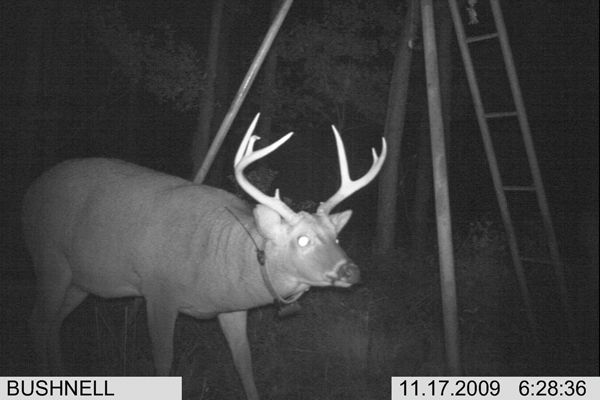 Other hunters are frustrated by the unpredictability of the rut. All the time and effort spent patterning a particular buck go down the drain when the deer suddenly disappears and gets harvested by another hunter. It's why so many hunters believe that once the rut kicks in, you can throw all that you learned about a buck's movements out the window. But several recent studies of buck movements have found that bucks don't always leave their home ranges (where they spend 95 percent of their time) during the rut, and those that do aren't gone for very long.
Other hunters are frustrated by the unpredictability of the rut. All the time and effort spent patterning a particular buck go down the drain when the deer suddenly disappears and gets harvested by another hunter. It's why so many hunters believe that once the rut kicks in, you can throw all that you learned about a buck's movements out the window. But several recent studies of buck movements have found that bucks don't always leave their home ranges (where they spend 95 percent of their time) during the rut, and those that do aren't gone for very long.
Former graduate student Justin Thayer and Louisiana State University professor Michael Chamberlin captured and placed radio telemetry collars on 37 bucks that lived in a bottomland hardwood forest in south central Louisiana. The area was managed by several hunt clubs whose members all agreed not to shoot bucks with fewer than 8 points.
On average, Thayer and Chamberlin found that bucks maintained home ranges smaller than 400 acres! Both adult (2€‰1„2 years old and older) and yearling bucks maintained the largest home ranges not in the fall when the rut occurs, but in the spring. They rarely ventured outside their home range during breeding season.
"Hunters would tell us that they knew bucks were around, but they just weren't seeing them," said Thayer, now a biologist for the Mississippi Department of Wildlife, Fisheries and Parks. "We'd often find a buck bedded down in heavy cover less than 50 yards from a hunter's blind."
Thayer believes that quality habitat explains why bucks stay on a property.
"Position your stands to always play the wind and so you can enter and exit without disturbing deer," Thayer added. "If you're late getting to your stand in the morning, go in an hour after it gets light. Do whatever you can to avoid bumping deer."
Brief Holidays
Radio telemetry technology only allowed Thayer to check on each buck's whereabouts several times a week. Graduate student Gabriel Karns placed GPS tracking collars on adult bucks living at Chesapeake Farms, a large agricultural research area in Maryland. Karns was able to take a GPS reading of each buck every 10 minutes to see if deer went on excursions, defined as movements lasting a minimum of six hours and venturing at least a half-mile from their home range.
Karns found that only 63 percent of all bucks monitored made an excursion, and 59 percent of them did so around breeding season. On average, bucks that took excursions during breeding time were only gone for 10.5 hours, and only 59 percent of them traveled during daylight hours.
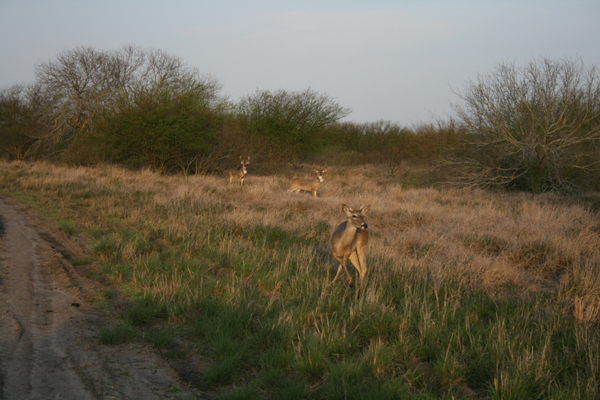 All of this is good news for hunters who've put in a lot of time and effort patterning an individual buck before the rut. Like the Lousiana study, Karns concluded that if deer live in an area that provides ample food and cover, they don't need to travel during breeding season. In other words, quality habitat will hold both does and bucks.
All of this is good news for hunters who've put in a lot of time and effort patterning an individual buck before the rut. Like the Lousiana study, Karns concluded that if deer live in an area that provides ample food and cover, they don't need to travel during breeding season. In other words, quality habitat will hold both does and bucks.
"In one area, there was a small creek running through a large cornfield," explained Karns. "One buck in our study stayed on 40 acres for three straight months."
For years, biologists and students from the Caesar Kleberg Wildlife Research Institute at Texas A&M University — Kingsville have been tracking the movements of different groups of bucks on the King Ranch in South Texas. To date, more than 100 bucks have been fitted with GPS collars and closely monitored. Each one wears its collar for about six months, giving biologists 3,000-5,000 observation points.
Researchers have learned that when it comes to adult buck travel patterns around breeding season, there is no pattern.
"Bucks are individuals with different personalities, so you can't say age influences the size of bucks' home ranges, how often they move or how far they travel during the rut," said biologist Mickey Hellickson.
All King Ranch bucks took at least one rut-excursion but were gone only one or two days. Former doctoral student Aaron Foley found it impossible to predict how long bucks would be gone on excursions.
"Excursion characteristics were variable," said Foley, now an ecologist for the U.S. Geological Survey. "Some were brief trips outside of home ranges, while some were clearly exploratory trips."
In other words, bucks didn't have any consistent pattern in how far they roamed, or even in why they roamed. This is consistent with what biologist and Quality Deer Management certification manager Matt Ross found when he analyzed the past 15 years worth of research on buck movement.
"Numerous studies have shown that a buck's home range size is highly variable and not strongly correlated to age, daily movements or any number of factors," said Ross. "Mature bucks are not clones of one another, and many display more individualistic behavior than what was previously thought."
Ross also notes that bucks use less of their home range during breeding time.
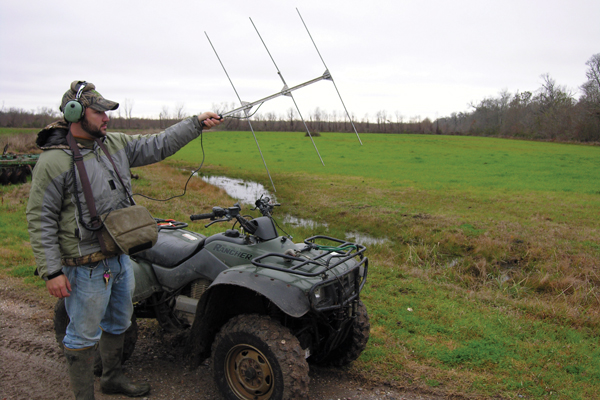 "Research from Texas recently showed that mature bucks only used 30 percent of their home range during the rut, had two or more points of activity that they focused on, and they re-visited these locations roughly every 20 to 28 hours," added Ross. "What's more, these same sites were targeted by numerous other collared bucks, possibly supporting the theory that bucks space their visits to doe groups to continually assess female receptiveness."
"Research from Texas recently showed that mature bucks only used 30 percent of their home range during the rut, had two or more points of activity that they focused on, and they re-visited these locations roughly every 20 to 28 hours," added Ross. "What's more, these same sites were targeted by numerous other collared bucks, possibly supporting the theory that bucks space their visits to doe groups to continually assess female receptiveness."
If you're going to target a specific buck, be relentless in your pursuit. Hunt the deer hard for several days, because there's a good chance the buck you're after will swing by your stand. Foley agrees.
"Because excursions typically only occurred two or three times per buck, bucks spend the vast majority of their time within their home ranges," added Foley. "Hunters that are familiar with a particular buck should spend as much time as possible within his home range — a sudden disappearance does not imply the buck is gone for good."
Two Residencies
Now for the bad news: the Chesapeake Farms and King Ranch studies have found that some bucks had two distinct home ranges. About 20 percent of King Ranch bucks had one home range during the rut and another the buck traveled to after breeding season. It's possible that the buck you're trying to harvest has two homes — and only one of them is where you hunt.
So, you need to decide if targeting only one buck throughout the season is worth it. If you play the odds, then stay put, as most bucks have only one home range. But if the buck you're after suddenly disappears and is gone for several days, it may have permanently relocated.
But take heart, because the research also suggests that as bucks age, they're less likely to leave or change where they live. This is particularly true if deer have quality habitat on your property. Like the other researchers, Ross firmly believes that providing ample food and cover goes a long way toward keeping all deer on your property, including bucks.
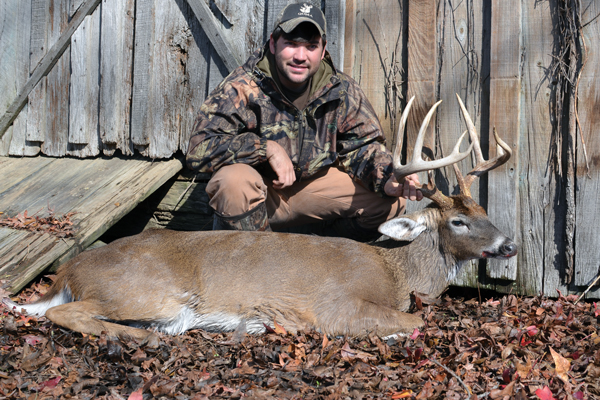 In the Texas studies, deer don't have nearly the quality of habitat as deer in Louisiana or at Chesapeake Farms. So, it's no surprise that King Ranch bucks had much larger home ranges and traveled much farther. Again, it boils down to giving deer what they need most: food and cover.
In the Texas studies, deer don't have nearly the quality of habitat as deer in Louisiana or at Chesapeake Farms. So, it's no surprise that King Ranch bucks had much larger home ranges and traveled much farther. Again, it boils down to giving deer what they need most: food and cover.
Finally, it bears repeating that bucks are unique creatures with different personalities. Some will be homebodies, while others will put miles under their hooves looking for estrus does. Spend some time before deer season figuring out the personality and preferences of the buck you'll be hunting.
Are most of your photos of the deer taken at night? Are you getting pictures of the same buck at many different locations on your property? Do you get a lot of pictures of the buck for several days and then it seems to disappear?
Answer these questions and you'll better understand the buck you're drooling over, helping you put an arrow through it come fall.
Follow the Corn
Corn is the No. 1 food source deer look for in the late season. If it gets cold or the snow piles up, you can bet any unharvested cornfield will have some serious trails leading to it.
Watch the Weather
When ice blankets the land, it is very hard for deer to feed on crops and waste grain. When a warm front comes through and breaks the grip of ice, the deer will move heavily.
Don't Overhunt
Just having a good stand location adjacent to a prime, late-season food source isn't enough. You also need a change in the weather to get deer moving or trail-camera evidence that shows a good buck is visiting the field during daylight. Until you have one of those two, don't overhunt that stand and risk educating all the deer in the area.
Late-Season Doe
A lot of bowhunters look at the late season as good time to fill doe tags, and rightly so. When the weather gets cold or the snow starts to pile up, the deer will concentrate where they can readily find food.
Persistence is Key
Field Editor Bill Winke shot this old buck last winter. It was a deer he had seen only on trail camera photos since the 2009 season. The cold front that came through that late December day caused the old buck to abandon his nocturnal ways.
Change the Location of Your Stand
There is a big difference between the kinds of stands you need to hunt during the late season and those you hunted during the rut. If you go back to your old, reliable rut stands during the late season, you will spend a lot of long, cold hours without much to show for it.
